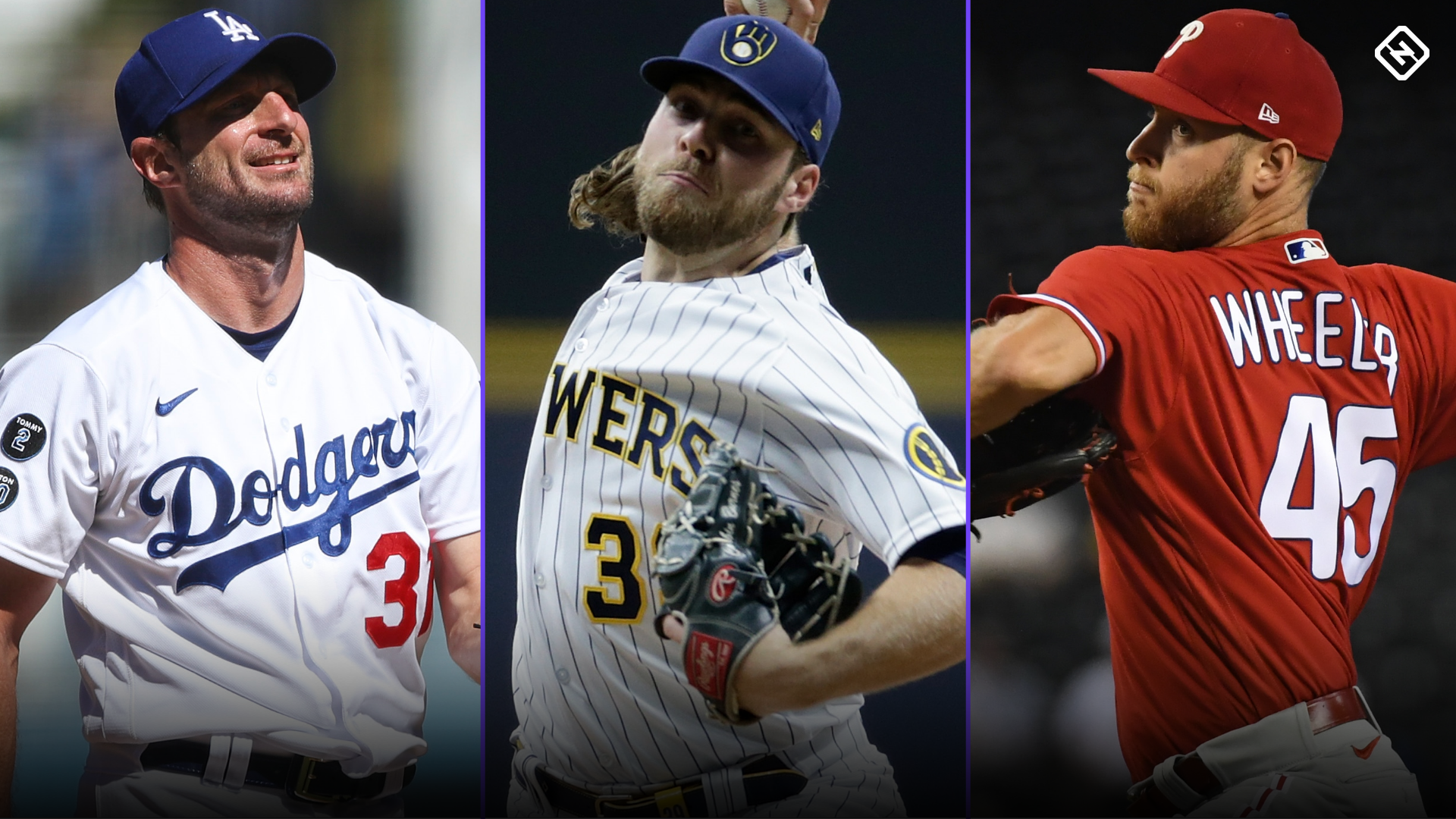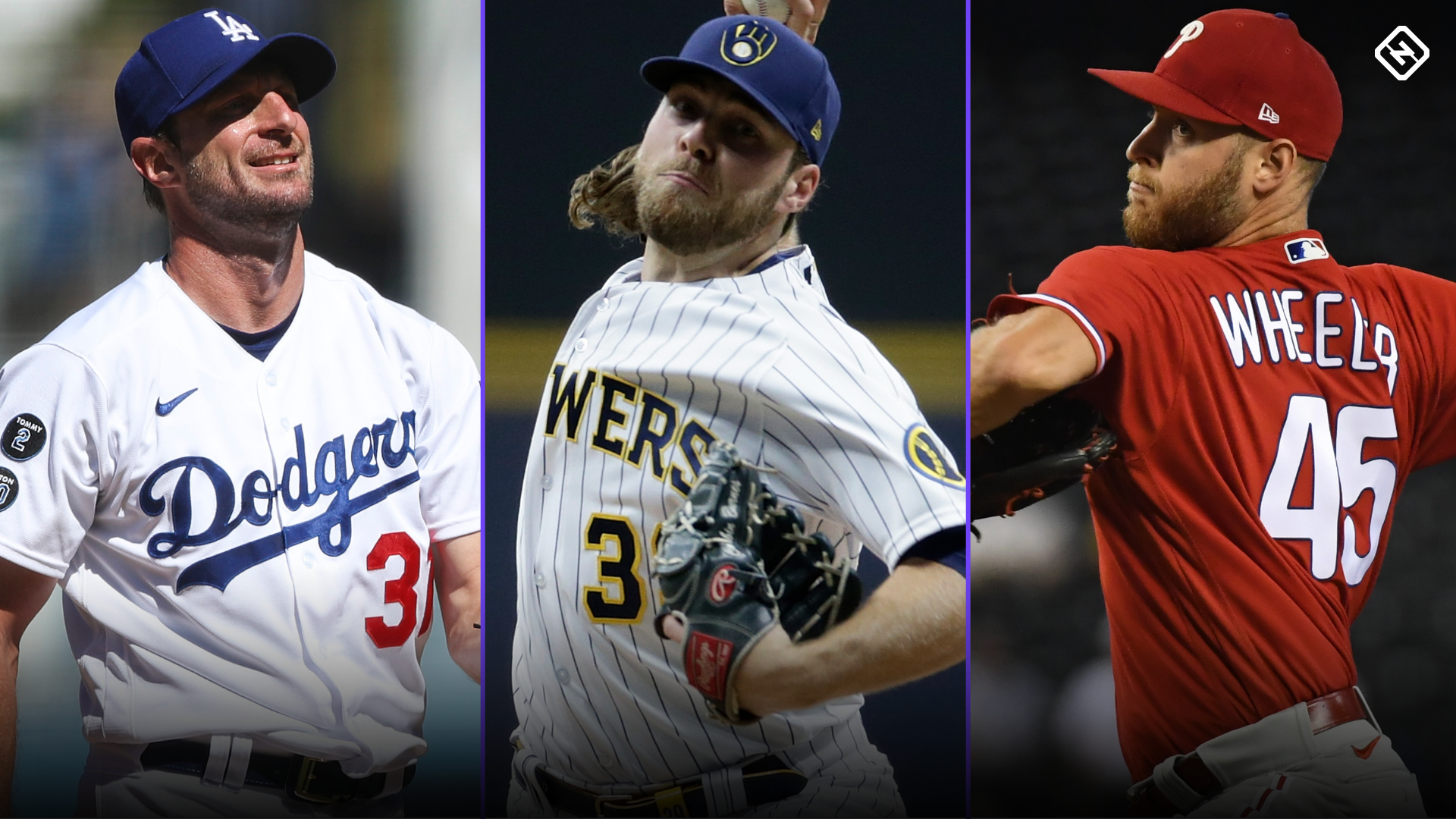NL Cy Young Award: SN MLB writer explains why he voted Corbin Burnes No. 1

The 2021 National League Cy Young race was a fascinating study.
A case could easily made for four different pitchers to receive first-place votes. My ballot, at various stages of the research process, had a number of different combinations among the top four pitchers, and the fifth spot in the ballot had several different names. Innings matter, but dominance matters, too. How to mix and match to figure out a ballot?
We’ll get to that in a moment.
MORE: 2021 MLB awards: Full list of finalists, winners
This is my third NL Cy Young vote. The first was 2015, the year Jake Arrieta won, and the top of my ballot looked like this:
1. Zack Greinke, Dodgers
2. Jake Arrieta, Cubs
3. Clayton Kershaw, Dodgers
Here’s the explanation column I wrote, if you’re interested. I read back over that piece (and my 2017 explanation column) multiple times because I strive to remain consistent with how I vote for awards and the Hall of Fame. Problem is, there wasn’t much comparison between the Cy Young class of 2015 and the Cy Young class of 2021. Greinke, Arrieta and Kershaw — in whatever order you want — all had much better seasons than anyone from this year’s class. Here’s the most stark difference: All three threw at least 55 2/3 more innings than the pitcher who got the No. 1 spot in my 2021 ballot. Yeah.
Greinke made 32 starts, allowed more than three runs just twice and his ERA never topped 2.00 (his FIP never topped 1.66 after his second start). In his final 20 starts, Arrieta had a 0.86 ERA and held opposing batters to a .410 OPS. Kershaw hit the 300-strikeout mark (301) and had a 2.13 ERA in 232 2/3 innings.
But, as Mark McGwire once famously told Congress, we’re not here to talk about the past.
Here’s my ballot, with thoughts on each pitcher.
1. Corbin Burnes, Brewers
Here’s the thing: I believe that innings matter in this debate. The longer starting pitchers are on the mound providing quality innings, the greater their value. It’s a cascading effect; primarily those innings from an ace-type starter allowing for a lighter workload for relievers every fifth day. So Burnes, with just 167 innings in 28 starts, had a lot of ground to make up compared with fellow Cy Young contenders Zack Wheeler (213 1/3 in 32) and Walker Buehler (207 2/3 in 33). Max Scherzer had 179 1/3 innings, which isn’t a big difference.
In my opinion, Burnes would not have made up the gap against recent Cy Young winners — Jacob deGrom in 2018 or 2019, Scherzer in 2016 or 2017 — or, as I mentioned, any of the three top NL pitchers in 2015. But he wasn’t competing against those pitchers. With that, I’ll stop talking about the past now, I promise.
Instead, let’s talk about how brilliant Burnes was during his 167 innings on the mound in 2021 — because, as you know now that I’ve told you I voted for him first, I believe he made up that gap on the 200-inning hurlers. Burnes gave up just seven home runs all season. His FIP of 1.63 was downright historic. Both numbers blew away Wheeler and Buehler. His BB/9 (1.8) and K/9 (12.6) bested both right-handers, as did his K/BB (6.88), obviously. In addition to leading the league in ERA (2.43) and FIP (1.63), Burnes was tops in DRA (2.63), too. He held opposing batters to a .521 OPS; for context, there were 133 batters in 2021 who had enough PAs to qualify for the batting title and the worst OPS of the bunch was Kevin Newman, at .574. Burnes basically made everyone hit significantly worse than the worst-hitting regular in baseball.
In April, Burnes struck out 49 batters and issued zero walks. He had a nine-start stretch from late June to mid-August during which he allowed more than one run just one time. He had seven starts this year in which he threw at least six full innings and allowed two or fewer hits, including his eight-inning no-hit gem in September, when he struck out 14 Cleveland batters (and Josh Hader finished the no-hitter).
2. Zack Wheeler, Phillies
Wheeler has been everything the Phillies could have hoped for since they signed the right-hander to his five-year, $118 million free-agent deal after the 2017 season. Wheeler led MLB with his 213 1/3 innings and finished one strikeout back of MLB leader Robbie Ray, with 247 strikeouts. He posted career-bests in K/9 (10.4) and BB/9 (1.9) and, of course, K/BB (5.37).
Wheeler had 17 starts with at least seven complete innings; only two other pitchers had more than 13. Of those 17 with at least seven innings, Wheeler allowed one or zero earned runs 10 times. During a five-start stretch in June and July, he exited the game without allowing a single run four times.
Wheeler did have some hiccups along the way, though. He gave up at least four earned runs nine times in his 32 starts. His ERA for the month of August was 4.81 — and that’s including his complete-game two-hit shutout of the Mets on Aug. 8. Of course, he followed that with a 1.47 ERA in September. I can absolutely understand voters who put Wheeler atop their ballot.
MORE: The 2021 Sporting News MLB awards, as voted by players, managers and execs
3. Max Scherzer, Dodgers/Nationals
Mad Max sure was brilliant when he arrived in Los Angeles. That 0.78 ERA in his first nine starts with the Dodgers conjured up memories of Arrieta’s closing Cy Young push in 2015, when he had a 0.41 ERA in his last dozen starts of the season. Crap. Talked about the past again. OK, no more of that starting … now. The Dodgers needed every one of those brilliant outings, chasing a Giants team in the NL West that had zero quit; L.A. won all nine of those Scherzer starts. His last two starts — five earned runs in each one — were not great, and that followed suit with an odd season.
Scherzer was, it seemed, either really good or kinda mediocre all season, with very little middle ground. He made 30 starts on the year and gave up zero, one or two earned runs 24 times. He gave up four or more earned runs (high of seven) six times. He allowed exactly three earned runs zero times. Either brilliant or “meh” every time out, with the brilliant side of the ledger packed. The most impressive stat, maybe, for Scherzer this year: When runners were in scoring position (second or/and third base), opponents had just a .454 OPS against Scherzer. That’s crazy good, and it’s much better than either Burnes (.690) or Wheeler (.707), and it’s why I can absolutely understand voters who put Scherzer atop their ballot.
4. Walker Buehler, Dodgers
Buehler was Mr. Quality Start for the Dodgers in 2021. The right-hander had 27 quality starts — defined as at least six innings pitched, three or fewer earned runs allowed — and nobody else in baseball had more than 23. He could have had 28, too, but he was pulled after 79 pitches and five innings of work in Game 162, with the Dodgers up, 6-1. He’d allowed just three hits and struck out 11 Brewers. During a 20-start stretch from mid-May to the end of August, Buehler had 19 quality starts and didn’t give up more than three earned runs.
Now, of course, the QS isn’t a faultless stat. Of course not. But it’s kinda like Wikipedia — a good place to start and help you figure out where to dig deeper. In that 20-start stretch with 19 QSs, Buehler’s ERA was 1.57 and the Dodgers won 15 times. Like his eventual teammate Scherzer, Buehler was at his best with runners on base; he allowed a .583 opponents OPS overall, and that number dropped to .522 with runners in scoring position. Not surprisingly, his 80.9 left-on-base percentage was higher than Burnes (75.7) and Wheeler (75.3). Definitely understand the consideration to put Buehler atop the ballot.
5. Adam Wainwright, Cardinals
The top four pitchers on my ballot were clearly the four best pitchers in the National League, in my opinion. The question was, who gets that fifth vote? So many candidates for that spot, a list that also includes, in no particular order: Adam Wainwright, Julio Urias, Brandon Woodruff, Kevin Gausman, Charlie Morton, Sandy Alcantara and Marcus Stroman. I wouldn’t have had a problem voting for any of those outstanding pitchers in the fifth spot.
The nod went to Wainwright. It’s true that his numbers in some statistics we’ve come to look at as key — like FIP and WAR, plus many others — don’t measure up to others. But those measure one way of effectively pitching, based largely on throwing pitches that miss bats. That’s not the only way to be an effective pitcher, though, and it’s not Wainwright’s approach. His goal is to throw strikes, induce weak contact and churn up innings, and nobody did that better than Wainwright. Because, again, innings still matter. The days of 250-inning pitchers might be gone, but there’s still a large amount of value in a guy who will be among the league leader in innings, especially if they’re quality innings.
Wainwright threw at least eight full innings seven times in 2021, tied with Alcantara for the most in baseball. He had a nine-game stretch from mid-July through early September — when the Cardinals were threatening to fall apart — when he threw at least seven innings seven times. The stretch included a complete-game shutout and an eight-shutout-innings effort; his ERA in that stretch was 1.54. Wainwright completed at least seven innings 16 times, more than anyone else in baseball other than Wheeler (17). Add a run component in there — two or fewer ERs — and Wainwright’s tied with Buehler and Alcantara for the MLB lead, with 13. Set the parameters at seven innings and zero or one earned runs, and Wainwright’s alone at the top, with 11.
He’s also alone in the fifth spot on this Cy Young ballot.
For all the latest Sports News Click Here
For the latest news and updates, follow us on Google News.

